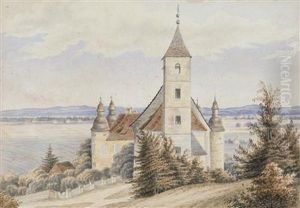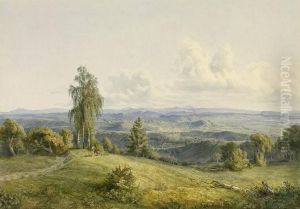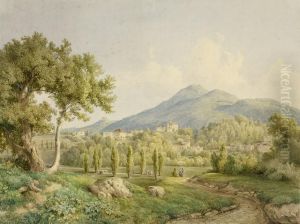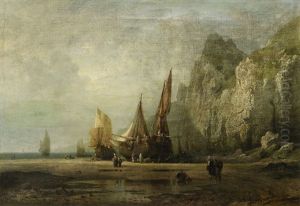Josef Kuwasseg Paintings
Josef Kuwasseg, born Carl Joseph Kuwasseg, was a painter of Austrian origin born on March 20, 1799, in Trieste, which at the time was a part of the Austro-Hungarian Empire. His family moved to Vienna during his childhood, where he began his artistic training. Despite the scarcity of detailed records of his early life and training, it is known that Kuwasseg developed a passion for art at a young age and was likely influenced by the rich cultural atmosphere of Vienna.
Kuwasseg's artistic career gained significant momentum when he moved to France. He became a naturalized French citizen and eventually settled in Paris, which was then the epicenter of the art world. In Paris, he became known for his landscape paintings, which were characterized by their detailed and realistic depiction of nature and architectural elements. His works often reflected the Romantic movement's fascination with nature and the sublime, which was prevalent at the time.
Throughout his career, Kuwasseg exhibited his works at the Paris Salon, the official art exhibition of the Académie des Beaux-Arts in Paris. His paintings were well-received and he garnered a respectable following. His landscapes were not limited to French scenery; he also painted views from his travels across Europe, capturing the diverse landscapes of the continent.
Kuwasseg's style evolved over the years, and he was known to experiment with various techniques and perspectives, often infusing his landscapes with a sense of depth and atmosphere. Despite the evocative quality of his work, Kuwasseg never achieved the same level of fame as some of his contemporaries.
Josef Kuwasseg passed away on October 9, 1859, in Paris. While he may not be as widely recognized today as some other artists of his time, his works are appreciated for their contribution to landscape painting and are held in various art collections. They serve as a testament to the rich tapestry of 19th-century European art and continue to be studied and admired for their technical skill and aesthetic beauty.



